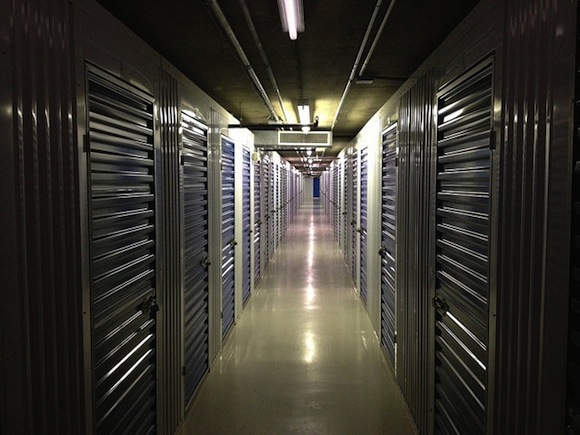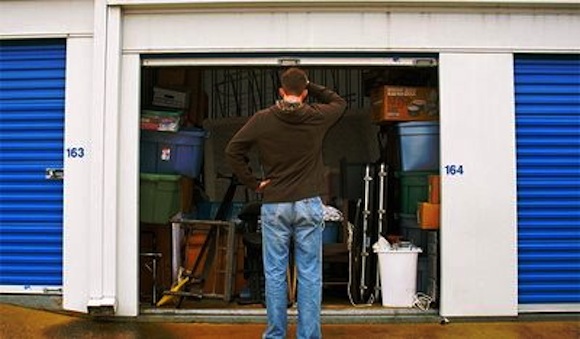If you’re like many Americans, all of your stuff doesn’t fit into your home. Whether you’re drowning in clothes, books or memorabilia, self-storage lets you keep your belongings without sacrificing the roominess of your home.
With self-storage, you rent extra space, typically on a monthly basis, to stash your property. Unlike full-service storage facilities, where you have limited access to your property and someone else figures out how items are stored, self-storage units give you full control over what’s in your unit and how items are arranged.
One of the biggest advantages of self-storage facilities is their flexibility, said Diane Dozier, manager of AAA Alliance Self Storage in Tempe, AZ.
Rather than waiting for someone to give you access to your belongings, you can enter and exit pretty much whenever you want, Dozier said. You also can remove household goods from your self-storage unit or add new ones, as long as they fit in the space.
Why Use Self-Storage?
Here are three reasons why you might want to choose self-storage:
- You’re downsizing and need someplace to store your extra possessions.
- You’re moving temporarily and don’t want to haul your belongings with you.
- You’re a small business owner who needs a place to store inventory that you don’t use every day.
Some families may need more storage space when a child returns from college or an elderly parent moves into the home. Depending on where you live, it may be less expensive to rent a self-storage unit to keep furniture and appliances than it is to move to a larger home.
Whatever reasons people have for embracing self-storage, the number of Americans who use self-storage facilities is growing. According to the Self Storage Association, a trade group for the self-storage industry, 10 percent of U.S. households rent self-storage units, up from 6 percent in 1995.
Types of Self-Storage Units
While you might have a certain picture of what a storage unit is in your mind, remember that their are a few different types of self-storage units, as well as a range of storage unit sizes to consider as well.
Indoor Self-Storage Units vs. Drive Up Self-Storage Units
Drive up access storage units are the traditional type that comes to mind first when considering storage options. These units can be found grouped together in outdoor buildings, with roll up doors accessible from the outside. Indoor units on the other hand are found inside a building, often multi-story.
Climate Control Storage Units vs. Non-Climate Controlled Storage Units
Climate-controlled storage units feature heating and cooling systems that maintain steady air temperature and humidity levels. This is important if you are storing certain items that can be easily effected by extreme temperatures. Non-climate controlled units on the other hand, are just storage units without any heating or cooling at all.
Storage Unit Sizes
Storage units come in a number of different sizes, which are measured in feet by width and length. Standard storage units have a ceiling height of 8′. The most common sizes are:
- 10×10
- 10×15
- 5×5
- 5×10
- 5×15
To calculate the total square feet, simply multiply the width by length. For example, a 10×10 unit will yield 100 square feet of storage space.
Larger sizes, like a 10×20 or 10×40, can often be used for vehicle storage.
Choosing a Self-Storage Facility
When it comes to choosing a self-storage facility, you should consider several things. Ideally, you want to select a self-storage facility that’s close to where you live, Dozier said.
Additional factors to consider include whether the facility offers video surveillance, alarms and other security features. Consider whether a prospective facility has adequate outdoor lighting and fencing to deter would be thieves
Before you rent a self-storage unit, follow these four tips from the Better Business Bureau:
- Check with your local Better Business Bureau to see whether any complaints have been filed against facilities you’re looking at.
- Compare prices for at least three nearby locations.
- Find out whether your homeowner’s or renter’s insurance policy covers your belongings when they’re in a self-storage unit. If not, you may be able to buy insurance from a self-storage facility or an independent insurer.
- Make sure you buy a secure lock to protect your belongings.
Cost of Renting Self-Storage
The cost of renting a self-storage unit varies based on the unit’s size and location. The average price to reserve a storage unit on SpareFoot was $87.89 a month as of January 2020. The average cost for a 5×5 unit was $45.18 and the average cost for a 10×20 was $134.58.
Prices tend to be higher in dense urban areas such as San Francisco or New York.
Also remember that climate-controlled units are typically 30% to 50% percent more expensive than units without.
Storage leases are month-to-month, which make them a great short-term option for temporary storage. Storage companies often raise rates overtime, so be aware that your costs might go up in the long-term.
Additional self storage insurance can be purchased as well to protect the value of your items in the event of damage or theft. Many companies require tenants to insure their belongings, but you can often show that you have an active home or renters policy to meet the requirement.
Storage renters should know that if they fail to make payments, the self-storage operator may lock their unit and put a lien on it. If back rent and fees aren’t paid, the storage company can auction off the contents to vacate the unit.




